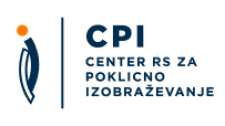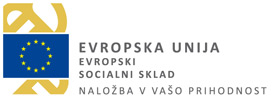Primary tabs
Elektrotehnik/elektrotehnica
Selected qualifications
| Name of qualification | Name of qualification: Elektrotehnik/elektrotehnicaAdd to comparison |
|---|---|
| Translated title (no legal status) | Translated title: Electrotechnician |
| Type of qualification | Type of qualification: Upper secondary technical education |
| Category of qualification | Category of qualification: Educational Qualification |
| Type of education | Type of education: Upper secondary technical education |
| Duration |
Duration of education:
4 years
|
| Credits | Credits: 240 credits |
| Admission requirements |
Entry conditions:
|
| ISCED field |
Field:
Engineering, manufacturing and construction
|
| ISCED subfield | subfield: electricity and energy |
| Qualification level |
SQF Level:
SQF 5 |
Certificate holders will be able to:
- read, plan, draft, monitor and amend technical documentation in accordance with prescribed instructions and through the use of ICT;
- program simple applications on programmable devices; program, install and wire programmable relays;
- install and wire various types of electrical and communication installations, connect users and carry out basic maintenance work;
- connect elements of electrical installations in switchboards, distribution and connecting devices, and select and switch electrical protections;
- carry out basic measurements and maintenance on electrical and communications installations, interpret results and identify faults;
- make required settings to an operating system and provide basic user support for the use of software;
- observe measures for safe work with electrical devices;
Elective:
Planning of electrical installations:
- implement user connections with elements of remote control;
- carry out electrical engineering calculations using dimensioning procedures in relation to user circuits and protections;
Drive technology:
- connect and test motors for safe operation, write measurement protocols and mechanically connect motors to powered machines;
Use of regulations:
- perform wiring, connecting, programming and setting of parameters of components in control and regulation systems and implement regulations;
Functioning of electrical energy systems:
- connect and maintain elements of low-voltage electrical networks and carry out measurements;
- provide advice on the introduction of measures for the efficient use of energy and the use of renewable energy;
Electricity generation and transmission:
- prepare and lead minor assembly and maintenance work in generation and transmission installations;
- carry out less complex switching operations in electricity generation and transmission;
Computer equipment maintenance:
- assemble and maintain computer hardware and rectify faults
- protect systems against abuse and viruses
Distribution network management:
- prepare and lead work on distribution networks
- formulate agreements on trade in electricity
Use of microprocessor devices:
- plan and program microprocessor boards
- control, capture and regulate microprocessor boards
Electricity supply and power conversion:
- demonstrate familiarity with the basic principles of generation and the importance of guaranteeing needs for electricity connections, set parameters and maintain electromechanical transformers
Transmission and recording of information:
- select, assemble, set up, manage and service components of audio and video systems
- set up local VF networks and install antenna devices
Equipment for multimedia technology:
- record, archive and broadcast sound, pictures and video in digital format, formal preparation of photographs
AV communications:
- manage hardware and software for filming, editing and showing AV content
- use computer formats to record text, graphics, video, sound and other media content
Online applications in multimedia technology:
- plan the development of, set up, update and maintain a website and online applications in accordance with a customer's requirements
- handle database data
Computer-aided design:
- use digital photography devices
- design websites and other documents for electronic media
Automation planning:
- manufacture and maintain simple pneumatic, electro-pneumatic and hydraulic controls
- program, install, start up, monitor and control the functioning of simple, automated multi-device units and video, carry out measurements and rectify faults
Capture and processing of process variables:
- select, install, assemble and wire sensors and measurement transducers
- capture, store, process and display captured process variables in laboratory and industrial environments using computer applications
Certificate holders have built on their key vocational knowledge and abilities with key general knowledge in line with national standards.
Students' vocational abilities and skills and the fulfilment of conditions to obtain credits in accordance with the relevant education programme are established through verification and assessment. Assessment of students also takes into account non-formally acquired knowledge, which must be adequately demonstrated. Students are assessed using scores from 5 (excellent) to 1 (inadequate).
Students may progress to the next year if at the end of the academic year they achieve a passing grade in all general education subjects and vocational modules from the school's operational curriculum for the year and have completed all extracurricular activities and all work placement requirements. Progression is also possible by decision of the programme teaching staff.
Elektrotehnik/elektrotehnica
SQF 5
EQF 4
The Career path tab shows the possible career path within the selected qualification area, which is not the only one and is not mandatory. The actual transition between qualifications, which is determined by law, is defined in the Transition tab.
SQF 6 / EQF 5
Matura/vocational course, higher vocational education (SQF level 6), professional higher education (SQF level 7) and academic higher education (SQF level 7)
Students must successfully (i.e. with passing grades) complete general education subjects, compulsory and elective vocational modules, and the open part of the curriculum. They must also complete extracurricular activities and on-the-job training and pass the vocational matura examination.
A vocational matura comprises a compulsory section (written and oral examination in Slovene, written and oral examination in nature protection) and an elective section (written and oral foreign language or mathematics examination, and a product/service and an oral presentation).
Vocational and technical secondary schools and adult education institutions
URL
Awarding body URL:Upcoming event
International Conference: 10 years of Slovenian Qualifications Framework
International Conference: 10 years of Slovenian Qualifications Framework Brdo Congress Centre, Predoslje 39, 4000...
© Center RS za poklicno izobraževanje, 2018. All rights reserved
Sitemap General legal notice Cookie Policy Production: ENKI






